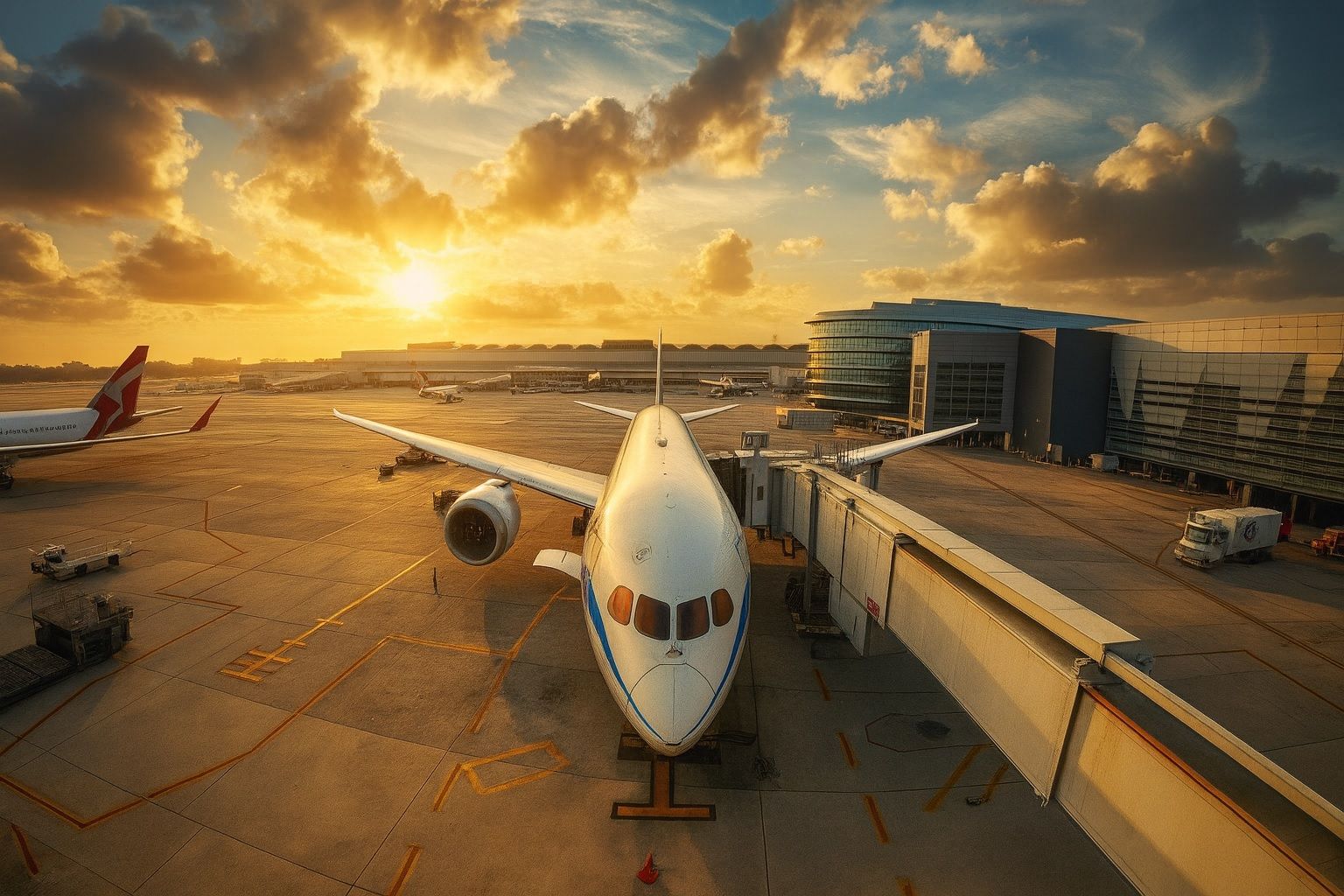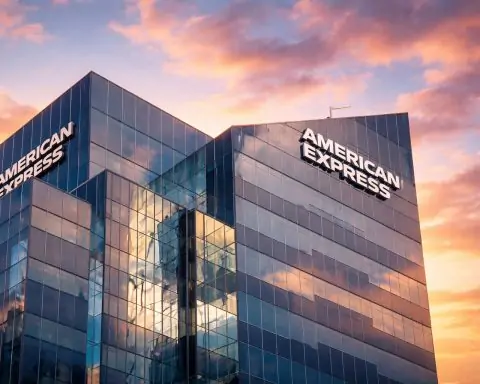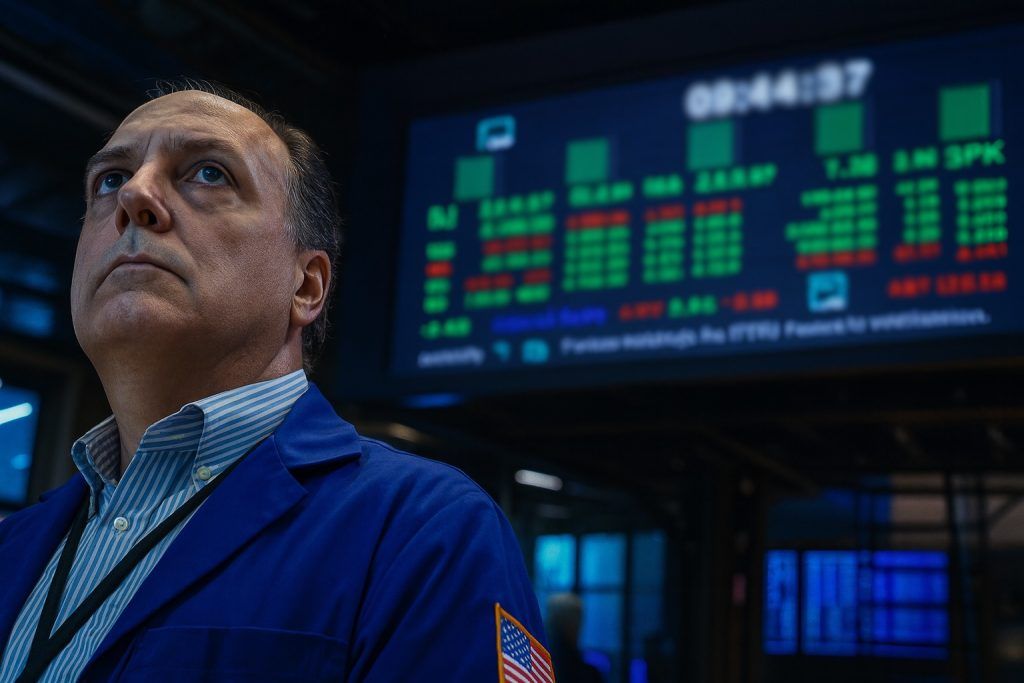- Exclusive Office Club: Miami’s new 830 Brickell tower – home to Citadel, Microsoft and other finance/tech firms – is launching a private members-only club on its top floors. Tenants get automatic invitations but must pay a $25,000 initiation fee plus $5,000 annual dues [1] for access to the luxe club and restaurant run by a renowned hospitality group.
- “Wall Street South” Perks: The 55-story 830 Brickell is fully leased to elite tenants (Citadel, Microsoft, Thoma Bravo, Kirkland & Ellis, etc.) and commands record office rents (approaching $200/sq. ft.) amid Miami’s office market surge [2]. The new club integrates high-end dining and networking space into the workplace, reflecting a trend of mixing business with lifestyle amenities [3] in Miami’s growing financial hub.
- Miami Seeks Asia Flights: Miami International Airport (MIA) is pursuing nonstop flights to Tokyo, Singapore, Riyadh, and Asunción. A county resolution directs officials to assess direct passenger or cargo service to these cities and woo airlines like Japan Airlines, Riyadh Air, American Airlines, etc. [4]. Local leaders tout that direct links to Asia and new markets would boost tourism and trade.
- Global Hub Aspirations vs. Reality:Experts caution that while Miami is ambitiously “connecting with key international markets,” turning wishlists into real routes depends on airline strategy, aircraft capabilities, and demand [5]. Ultra-long flights are especially challenging – a Miami–Singapore nonstop (over 10,500 miles) would exceed even Qantas’s record “Project Sunrise” routes and is “improbable with current technology” [6]. More feasible near-term: Miami–Asunción (Paraguay) using upcoming long-range jets, and eventually Riyadh, given Saudi Arabia’s growth [7] [8]. Tokyo remains a long-held goal (Miami has sought a Tokyo flight for years), but would likely require partnership with a Japanese carrier as their capacity grows.
- Miami’s Boom & Big Bets: The flurry of developments underscores Miami’s emergence as a major finance and tech hub often dubbed “Wall Street South.” Billionaire Ken Griffin, who moved Citadel to Miami in 2022, is doubling down – Citadel’s own new Brickell headquarters tower will cost an estimated $2.5 billion (up from $1B) as plans expand [9] – including a hotel – making it one of the priciest private office projects in U.S. history. Griffin isn’t worried: “If we build it, they will come,” he said, citing pent-up demand for top-tier office space in Miami [10].
- Market Reaction:Microsoft (MSFT) stock remains near record highs – recently around $512/share [11] – reflecting the tech giant’s strength as it expands presence in growth markets like Miami. American Airlines (AAL), a potential player in any new Miami routes, has seen a modest rebound; its stock trades near $12 [12] after a profitable summer, and analysts target ~$16–20 if travel demand stays strong [13]. Industry-wide, air travel is booming (projected 5.2 billion global passengers in 2025 with over $1 trillion in revenue [14]), benefiting legacy carriers – “the sector’s key fact is divergence: legacy carriers are capitalizing on the travel boom… whereas JetBlue is struggling” in the current market, according to a TS2.tech analysis [15].
Elite Members Club Transforms Miami’s 830 Brickell Tower
Miami’s latest trophy office skyscraper, 830 Brickell, isn’t just offering sweeping skyline views – it’s offering exclusivity. The developers have unveiled plans for a posh members-only club and fine-dining restaurant on the tower’s top floors, operated by The Bastion Collection (the group behind NYC’s Michelin-starred Le Jardinier) [16] [17]. This means tenants of 830 Brickell – heavyweights like Citadel and Microsoft – get automatic invitations to join the club, though it won’t come cheap. Membership requires a $25,000 initiation fee plus $5,000 in yearly dues [18]. These steep fees are designed to “maintain…exclusivity and high standards,” ensuring the club remains an ultra-premium environment for networking and unwinding [19].
Why put a private club in an office tower? It’s part of a broader “live-work-play” trend in Miami’s business scene, blending workspace with luxury lifestyle perks. “The inclusion of a high-end club and dining venue is a strategic move to enhance the allure of this office space, making it more than just a workplace,” notes a local report [20]. In other words, top executives and financiers can seal deals by day and socialize by night – all without leaving the building. Amenities at 830 Brickell already read like a five-star hotel: a rooftop lounge, fine dining restaurant, wellness center, sky lobby and more [21]. Adding an exclusive club elevates it further into “experience center” territory rather than a traditional office.
This strategy appears to be paying off. 830 Brickell is 100% leased, despite only opening last year, and at record-setting rents. Even amid national office market headwinds, demand in Miami’s Brickell financial district is sky-high – literally and figuratively. The tower’s developers (OKO Group and Cain International) have seen leasing rates soar from ~$60–70 per sq. ft to nearly $200 per sq. ft, underscoring how much companies are willing to pay for premium space in Miami [22]. Major tenants include blue-chip names across finance, tech and law – Microsoft (NASDAQ: MSFT), hedge fund Citadel, private equity firm Thoma Bravo, law firm Baker McKenzie, Spain’s Banco Santander, among others [23]. Landing such a roster solidified Miami’s reputation as “Wall Street South.”
Now, the tower’s new members-only club will further cement that status. It promises to be a power-broker’s playground in the sky: a place where startup founders chat over cocktails with hedge fund managers, and where VC partners can dine with CEOs without leaving their office address. It also mirrors a broader boom in exclusive clubs across Miami. In fact, private clubs have become de rigueur in the Magic City’s social scene as wealth pours in. For example, the recently opened Harbour Club in Miami Beach signed up ~40 lifetime members at up to $55,000 each [24] – a sign that demand for elite networking spaces is strong. “Miami’s social scene is becoming more private,” observed Bloomberg, with new invitation-only clubs proliferating to cater to the affluent newcomers and relocating financiers [25].
Developers say such perks are essential to compete for top tenants. “Miami continues to establish itself as a hotspot for business and innovation,” one local business report noted, and integrating luxury lifestyle amenities helps meet the expectations of today’s professionals [26]. In other words, Miami’s message to global firms is: bring your headquarters here, and we’ll give your execs the VIP treatment.
Miami International Airport Targets Tokyo, Singapore and More
It’s not just Miami’s office towers reaching for the sky – Miami International Airport (MIA) is literally aiming higher and farther. In a bid to elevate its status as a global aviation hub, MIA is actively exploring new nonstop flights to Asia, the Middle East, and South America. This week, the Miami-Dade County Airport Committee advanced a resolution directing the Mayor’s office to assess launching direct routes from MIA to four major cities: Tokyo (Japan), Singapore, Riyadh (Saudi Arabia), and Asunción (Paraguay) [27]. If the routes prove feasible, the county will “undertake all appropriate efforts to solicit such flights” from the relevant airlines [28] – think Japan Airlines for Tokyo, Riyadh Air (the new Saudi carrier) for Riyadh, Singapore Airlines for the ultra-long nonstop, or perhaps American Airlines for the nearer Latin American route.
Why these four cities? Each fills a strategic gap in Miami’s route map:
- Asunción is a key South American capital notably missing from MIA’s extensive Latin network. Paraguay’s economy has grown fast in the past decade, and Miami has a large Paraguayan diaspora. A direct Miami–Asunción flight could strengthen trade and family ties. American Airlines is a logical contender to operate it, potentially using the upcoming long-range Airbus A321XLR jets once they join AA’s fleet [29]. (Today, travelers between Miami and Paraguay must connect via hubs like Panama City or São Paulo.)
- Riyadh is an emerging business powerhouse in the Middle East under Saudi Arabia’s Vision 2030 reforms. Miami already has popular nonstop flights to Doha (Qatar) and Dubai (UAE) [30], but nothing to Saudi Arabia yet. With Saudi’s new flagship airline Riyadh Air set to expand rapidly, officials see a chance to link two global financial centers. A Miami–Riyadh route “may become viable, though likely several years away,” given the fledgling status of Riyadh Air’s long-haul fleet [31].
- Tokyo is one of the world’s top economic hubs and a long-sought prize for MIA – local leaders have pursued nonstop Tokyo flights for years as the holy grail of Asia connectivity. South Florida has strong business and tourism ties with Japan and Asia, but no direct flights (currently, the closest options are connecting via Dallas, New York or Los Angeles). Japan Airlines has historically been cautious in expanding new routes, but as it increases long-haul capacity post-pandemic, a Tokyo–Miami service is not out of the question [32]. Miami’s large Latin American network could also feed Asian traffic, making a Tokyo flight potentially viable with the right partnerships (e.g. codeshares). Still, it remains a longer-term ambition – as one aviation blogger quipped, Miami–Tokyo happening or not has been a topic “longer than I’ve been living here,” reflecting years of anticipation.
- Singapore is perhaps the most audacious target – a 10,500-mile ultra-marathon flight that would rank among the longest in the world. For context, it’s even farther than the planned NYC–Sydney “Project Sunrise” flights that Qantas is working on [33]. A nonstop Miami–Singapore would push the limits of today’s aircraft; aviation experts call it highly unlikely for now. “That’s not happening. Period,” wrote travel expert Ben Schlappig about the prospect, noting such a flight exceeds current aircraft range and economics [34]. In fact, Miami’s resolution to explore Singapore service is seen more as a bold statement of intent than a near-term plan [35]. (It hasn’t stopped some from dreaming – a one-stop via a tech stop in say, Anchorage or using future ultra-long-range jets, but those are theoretical at best.)
Despite these challenges, Miami officials are serious about expanding MIA’s global reach. The resolution mandates quarterly progress reports to track efforts in courting airlines [36]. This proactive stance signals that Miami is determined to secure its first-ever nonstop link to East Asia, and strengthen its Middle East and South America connections. Such routes would be game-changers: local tourism authorities say direct Asia flights could unlock a new wave of visitors, conventions, and business opportunities in South Florida. “The move underscores Miami’s ambition to connect with key international markets and enhance trade and tourism potential,” an aviation news outlet observed about the airport’s push [37].
However, industry veterans temper expectations. Launching a new long-haul route is complex, often requiring incentives, airline business cases, and sometimes years of groundwork. “Airports routinely identify target routes, but making that service a reality is a different story,” Schlappig notes [38]. Airlines will only commit if they see sustained demand and profit potential. For example, American Airlines – MIA’s dominant carrier – has so far shied away from Asia routes out of Miami, focusing its limited long-haul jets on transatlantic and U.S.–Latin America routes where it faces less competition [39]. Japan Airlines or All Nippon Airways would need to allocate a long-range jet and likely receive Japanese government support or joint venture tie-ins to open a Miami run. Similarly, Riyadh Air may prioritize higher-demand U.S. gateways first (it’s backed by Saudi’s wealth, but has a lot on its plate building a global network). As for Asunción, American Airlines could trial it a few times a week once their A321XLRs arrive (~2026), but even that might wait until the airline feels the aircraft aren’t needed elsewhere [40].
The most realistic outcome in the short term? Aviation analysts say Miami–Asunción could happen first – perhaps within a couple of years – given Paraguay’s size and the relatively shorter distance (4,000 miles). Miami–Riyadh might follow later in the decade if Riyadh Air grows as planned [41]. Tokyo remains a hopeful “someday” – maybe in partnership with Japan Airlines in the later 2020s. And Singapore, well, that’s more of a moonshot dream until next-generation aircraft (or a refueling stop strategy) make it plausible. In summary, Miami’s doing the right homework to position itself, but patience will be key. “Not all [target routes] are likely to materialize soon,” experts note, “but the discussion itself signals Miami’s proactive stance” in shaping its future air links [42].
Analysis: Miami’s Evolution as a Global Finance & Travel Hub
Miami’s twin developments – an exclusive $25k members club for financiers and a campaign for nonstop flights bridging new continents – both speak to the same larger story: the city’s rapid rise on the world stage. Long known for beaches and Latin American trade, Miami is now aggressively courting Wall Street capital and international connectivity in a way that could redefine its future.
On the finance and tech side, Miami’s momentum has been undeniable in recent years. The city became a magnet for hedge funds, private equity, and tech firms, especially during and after the pandemic. The influx earned it nicknames like “Wall Street South” and “Silicon Beach.” Citadel’s Ken Griffin perhaps personifies this shift – he relocated his $60 billion hedge fund from Chicago to Miami in 2022, citing Chicago’s crime and Florida’s pro-business climate. Since then, Citadel has been on a Miami expansion spree: first taking eight floors in 830 Brickell [43], and now planning a standalone signature tower in Brickell that will dwarf the local skyline. That project’s budget has ballooned to $2.5 billion – more than double initial estimates – after adding a luxury hotel and other features [44] [45]. Yet Griffin remains unfazed by the cost. He told a recent gathering that Miami desperately needs more top-grade office space, and he’s confident tenants will flock to it: “If we build it, they will come” [46]. It’s a bold bet that Miami’s boom is just beginning.
The success of 830 Brickell and its forthcoming club also illustrate this boom. Not only did Miami attract firms like Microsoft (which leased a large chunk of 830 Brickell [47]), but those firms are now engaging in the local culture of exclusivity and networking. A decade ago, a private office club with a five-figure membership fee might have seemed out of place in Miami’s business district. Today it feels almost on-brand for the Magic City’s new elite. The trend mirrors what’s happened in New York and London’s financial circles – now transplanted to South Florida. “Private clubs with $55,000 memberships are taking off in Miami,” Bloomberg reported earlier this year, noting pent-up demand for high-end gathering spots [48]. By integrating such amenities directly into office towers, Miami is signaling that it can offer the same cosmopolitan, all-inclusive lifestyle that top executives expect in global capitals.
On the aviation and trade side, Miami’s push for more direct flights is both practical and symbolic. Practically, MIA is the U.S. gateway to Latin America and one of the busiest airports nationally, but it lacks any nonstop link to East Asia – a glaring hole as Asia-Pacific now represents one-third of global GDP. Winning a Tokyo flight, for instance, would instantly elevate Miami’s stature in the eyes of Asian investors and tourists. The economic ripple effects could be significant: more Asian business delegations visiting Miami, growth in trade (Miami is a major cargo hub too), and increased appeal for multinationals to base Latin American regional offices in Miami if they can fly straight to headquarters in Asia. The same goes for a Riyadh flight – it would cement ties between South Florida and the Middle East’s finance capital, possibly unlocking new investment flows (recall that Saudi firms and funds have been investing heavily in U.S. tech and real estate). County Commissioner Kevin Marino Cabrera, who introduced the resolution, argued that such routes would “open Miami to new tourism and hospitality markets” and benefit local hotels and attractions (indeed, Miami’s tourism bureau would love to welcome high-spending visitors from Japan, Saudi Arabia, and beyond).
Symbolically, the message is Miami is not just a sun-and-sand town – it’s a global city on par with New York or L.A. A decade ago, nonstop flights from Miami to Asia or the Middle East were almost unimaginable; now local officials are actively pitching them. It aligns with Miami’s successful effort to host events like Formula 1 and attract international banks – another proof point that the city’s ambitions are global.
That said, reality checks abound. Airlines operate on thin margins and will only start routes that make financial sense. An ultra-long flight to Singapore might sound sexy, but if it’s a money-loser, it won’t last (and most such routes require expensive subsidies). Industry experts suggest Miami should focus on “reachable wins” like Asunción or maybe a restart of Tel Aviv service (another market recently floated) before going after 19-hour flights. It’s telling that even American Airlines – which uses Miami as its Latin America hub – hasn’t ventured to Tokyo or Seoul from MIA in all these years; the demand may not yet justify it, especially with one-stop options via Dallas or New York available. But as global travel patterns evolve and Miami’s population swells with more transplants from around the world, those equations can change. The good news: global air travel is in a post-pandemic boom, with IATA forecasting record passenger numbers and airline profits in 2025 [49]. That rising tide could make previously marginal routes more viable. Lower fuel prices and next-gen aircraft (like Boeing’s upcoming ultra-long-range models) could further tilt the odds in Miami’s favor over the next 5–10 years.
From a market perspective, investors seem to be betting on Miami’s trajectory. Microsoft’s stock (MSFT) continues to perform strongly (up ~40% in the past year, trading around $510–$515 [50] lately), and while that’s driven by its cloud and AI businesses, the company’s growth strategy includes expanding in talent-rich locales – it’s no coincidence Microsoft planted a flag in Miami’s most prestigious tower. American Airlines (AAL) stock, on the other hand, reflects both the upside and challenges in the travel sector. At roughly $12/share [51], AAL is well below pre-pandemic highs, and analysts remain cautious but optimistic – the consensus 12-month target is about $16.60 [52], with some bulls aiming even higher if international travel keeps booming. As one TS2.tech report highlighted, legacy carriers like American and Delta are “capitalizing on the travel boom”, reporting strong profits as demand and fares stay high [53] [54]. In fact, American just posted better-than-expected Q3 earnings, citing a rebound in corporate and premium travel [55]. New long-haul routes out of Miami, if they materialize, could tap into that premium demand (for example, a Tokyo flight could command lucrative business fares). Still, airlines will weigh those opportunities against other deployments of aircraft – so Miami will need to show them the traffic (perhaps via incentive deals, which many airports use to lure airlines).
Bottom Line: Miami is in the midst of a transformation from a regional center to a truly global hub. The simultaneous rise of exclusive financial clubs and the pursuit of far-flung air routes both underscore a city brimming with confidence. There are hurdles to clear – be it making an Asia flight profitable or sustaining the luxury office boom if the economy turns – but the momentum is real. As Ken Griffin’s commitment and the constant stream of new projects show, many influential players are betting big on Miami’s future. If even some of these ambitions pan out (say, Citadel’s tower fills up and MIA lands a Tokyo flight in a few years), the Magic City’s evolution will accelerate further. Miami, once primarily viewed as a vacation paradise, is rapidly earning its stripes as a place where serious business gets done and where the world truly connects. In the words of one optimistic observer: when it comes to Miami’s ascent, “momentum is continuing” [56] – and the best may be yet to come.
Sources: Bloomberg [57] [58]; CRE Daily [59] [60] [61]; Aviation Week/A2Z [62] [63] [64]; One Mile at a Time [65]; TS2.tech [66]; MacroTrends (MSFT) [67]; MacroTrends (AAL) [68]; others as cited above.
References
1. www.el-balad.com, 2. traded.co, 3. www.el-balad.com, 4. aviationa2z.com, 5. aviationa2z.com, 6. aviationa2z.com, 7. aviationa2z.com, 8. aviationa2z.com, 9. www.credaily.com, 10. www.credaily.com, 11. www.macrotrends.net, 12. www.macrotrends.net, 13. ts2.tech, 14. ts2.tech, 15. ts2.tech, 16. www.el-balad.com, 17. www.el-balad.com, 18. www.el-balad.com, 19. www.el-balad.com, 20. www.el-balad.com, 21. www.credaily.com, 22. traded.co, 23. www.credaily.com, 24. www.bloomberg.com, 25. www.bloomberg.com, 26. www.el-balad.com, 27. aviationa2z.com, 28. onemileatatime.com, 29. aviationa2z.com, 30. onemileatatime.com, 31. aviationa2z.com, 32. aviationa2z.com, 33. onemileatatime.com, 34. onemileatatime.com, 35. aviationa2z.com, 36. onemileatatime.com, 37. aviationa2z.com, 38. onemileatatime.com, 39. aviationa2z.com, 40. onemileatatime.com, 41. aviationa2z.com, 42. aviationa2z.com, 43. www.credaily.com, 44. www.credaily.com, 45. www.credaily.com, 46. www.credaily.com, 47. en.wikipedia.org, 48. www.bloomberg.com, 49. ts2.tech, 50. www.macrotrends.net, 51. www.macrotrends.net, 52. ts2.tech, 53. ts2.tech, 54. ts2.tech, 55. ts2.tech, 56. ts2.tech, 57. www.bloomberg.com, 58. www.bloomberg.com, 59. traded.co, 60. www.credaily.com, 61. www.credaily.com, 62. aviationa2z.com, 63. aviationa2z.com, 64. aviationa2z.com, 65. onemileatatime.com, 66. ts2.tech, 67. www.macrotrends.net, 68. www.macrotrends.net










